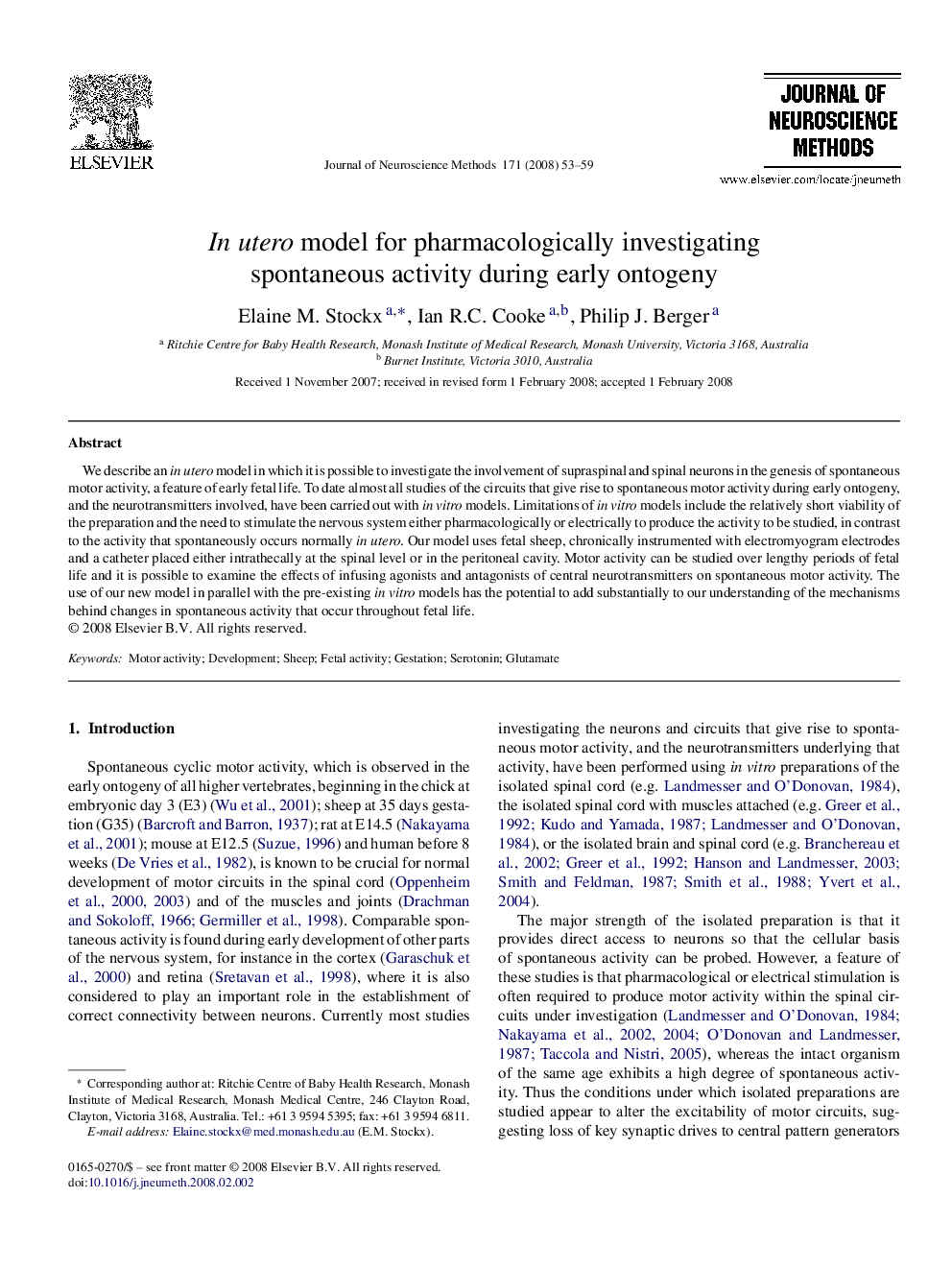| Article ID | Journal | Published Year | Pages | File Type |
|---|---|---|---|---|
| 4336179 | Journal of Neuroscience Methods | 2008 | 7 Pages |
Abstract
We describe an in utero model in which it is possible to investigate the involvement of supraspinal and spinal neurons in the genesis of spontaneous motor activity, a feature of early fetal life. To date almost all studies of the circuits that give rise to spontaneous motor activity during early ontogeny, and the neurotransmitters involved, have been carried out with in vitro models. Limitations of in vitro models include the relatively short viability of the preparation and the need to stimulate the nervous system either pharmacologically or electrically to produce the activity to be studied, in contrast to the activity that spontaneously occurs normally in utero. Our model uses fetal sheep, chronically instrumented with electromyogram electrodes and a catheter placed either intrathecally at the spinal level or in the peritoneal cavity. Motor activity can be studied over lengthy periods of fetal life and it is possible to examine the effects of infusing agonists and antagonists of central neurotransmitters on spontaneous motor activity. The use of our new model in parallel with the pre-existing in vitro models has the potential to add substantially to our understanding of the mechanisms behind changes in spontaneous activity that occur throughout fetal life.
Related Topics
Life Sciences
Neuroscience
Neuroscience (General)
Authors
Elaine M. Stockx, Ian R.C. Cooke, Philip J. Berger,
